20.03.2025
Isar Aerospace sets date for first launch after receiving license
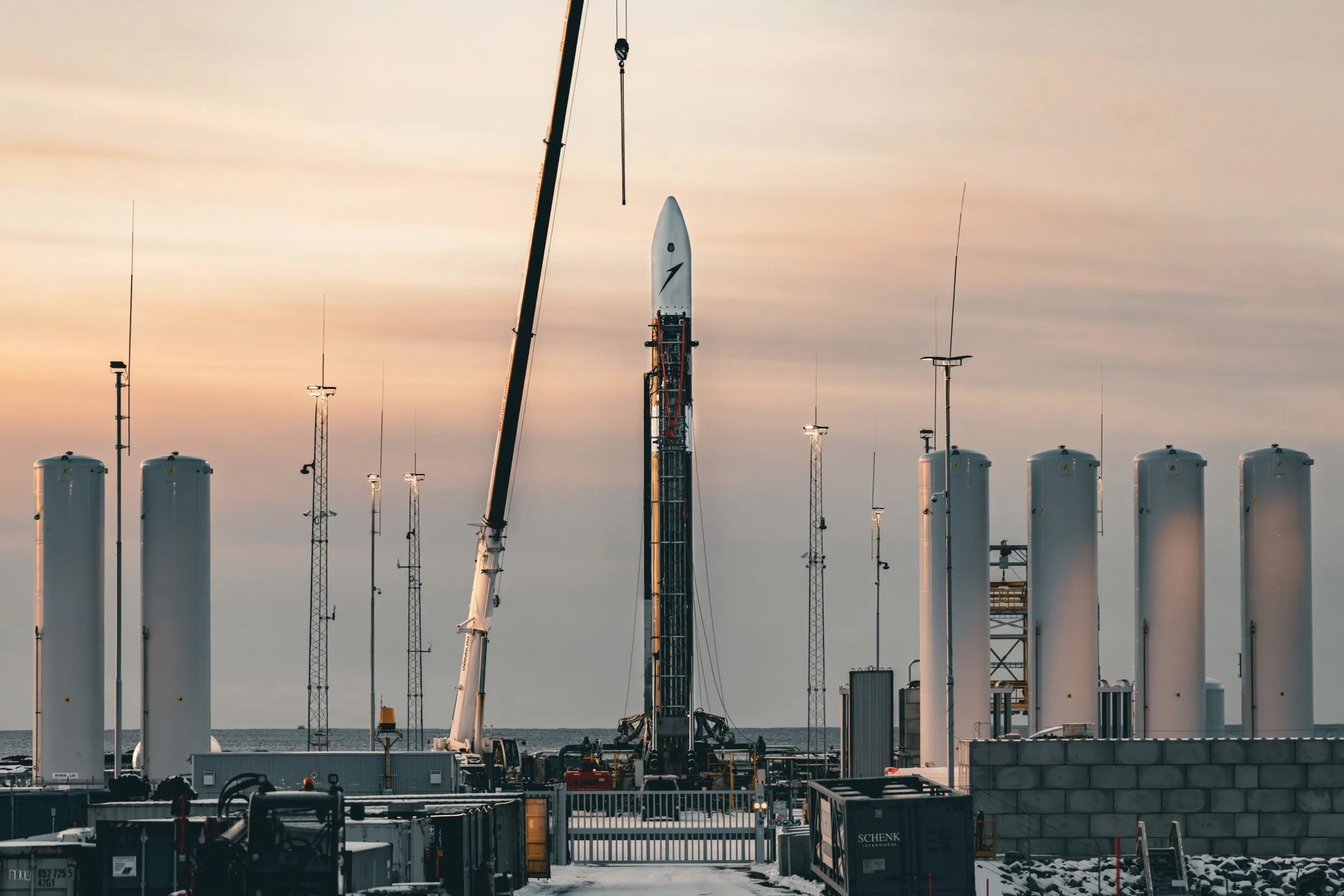
Isar Aerospace's first Spectrum rocket on the pad at Andøya Spaceport ahead of a launch scheduled for as soon as March 20. Credit: Isar Aerospace
WASHINGTON — Isar Aerospace is ready to perform its first orbital launch attempt as soon as March 20 after receiving a license from Norwegian regulators.
Isar announced March 17 that the Norwegian Civil Aviation Authority (CAA) issued a launch operator license to the company for its Spectrum rocket, launching from Andøya Spaceport in northern Norway.
The launch, called “Going Full Spectrum” by the company, is a test flight of Spectrum with no customer payloads on board. “Our goal is to test each and every component and system of the launch vehicle,” Alexandre Dalloneau, vice president of mission and launch operations at Isar Aerospace, said in a statement about the upcoming launch.
Isar Aerospace did not announce a specific time for the launch, noting the timing would depend on weather as well as range and vehicle readiness. Andøya Space, which operates the spaceport, noted that maritime notices are in effect daily from 12:30 to 4:30 p.m. local time for the launch. The launch period covered by the permit runs through the end of the month.
Isar said in February it had completed testing of the Spectrum ahead of the launch, including static-fire tests of both the first and second stages of the vehicle. The company said the license was the final milestone before a launch attempt.
In its own statement, CAA Norway said the launch permit to Isar Aerospace, the first issued by the agency, followed procedures laid out in the Norwegian Space Act and used the U.S. Federal Aviation Administration’s Part 450 launch licensing regulations as a standard. The permit, the agency added, is valid only for the inaugural launch of Spectrum. CAA Norway licensed the spaceport in August 2024.
The launch will not only be the first flight by Isar Aerospace but will also be the first vertical orbital launch attempt from Europe, excluding Russia. Virgin Orbit performed an air launch from Spaceport Cornwall in the United Kingdom in January 2023, deploying its LauncherOne rocket from a Boeing 747 aircraft, but a problem with the rocket’s second stage prevented it from reaching orbit.
The launch attempt will be a major milestone for both the company and the European space industry as it seeks to expand its launch capabilities. “In today’s geopolitical climate, our first test flight is about much more than a rocket launch: Space is one of the most critical platforms for our security, resilience and technological advancement,” Daniel Metzler, chief executive and co-founder of Isar Aerospace, said in a statement. “In the next days, Isar Aerospace will lay the foundations to regain much needed independent and competitive access to space from Europe.”
Quelle: SN
----
Update: 27.03.2025
.
German Firm Eyes New Window for Europe’s First Commercial Orbital Launch
Isar Aerospace plans to send off its two-stage-to-orbit Spectrum rocket from Andøya Spaceport in Norway.
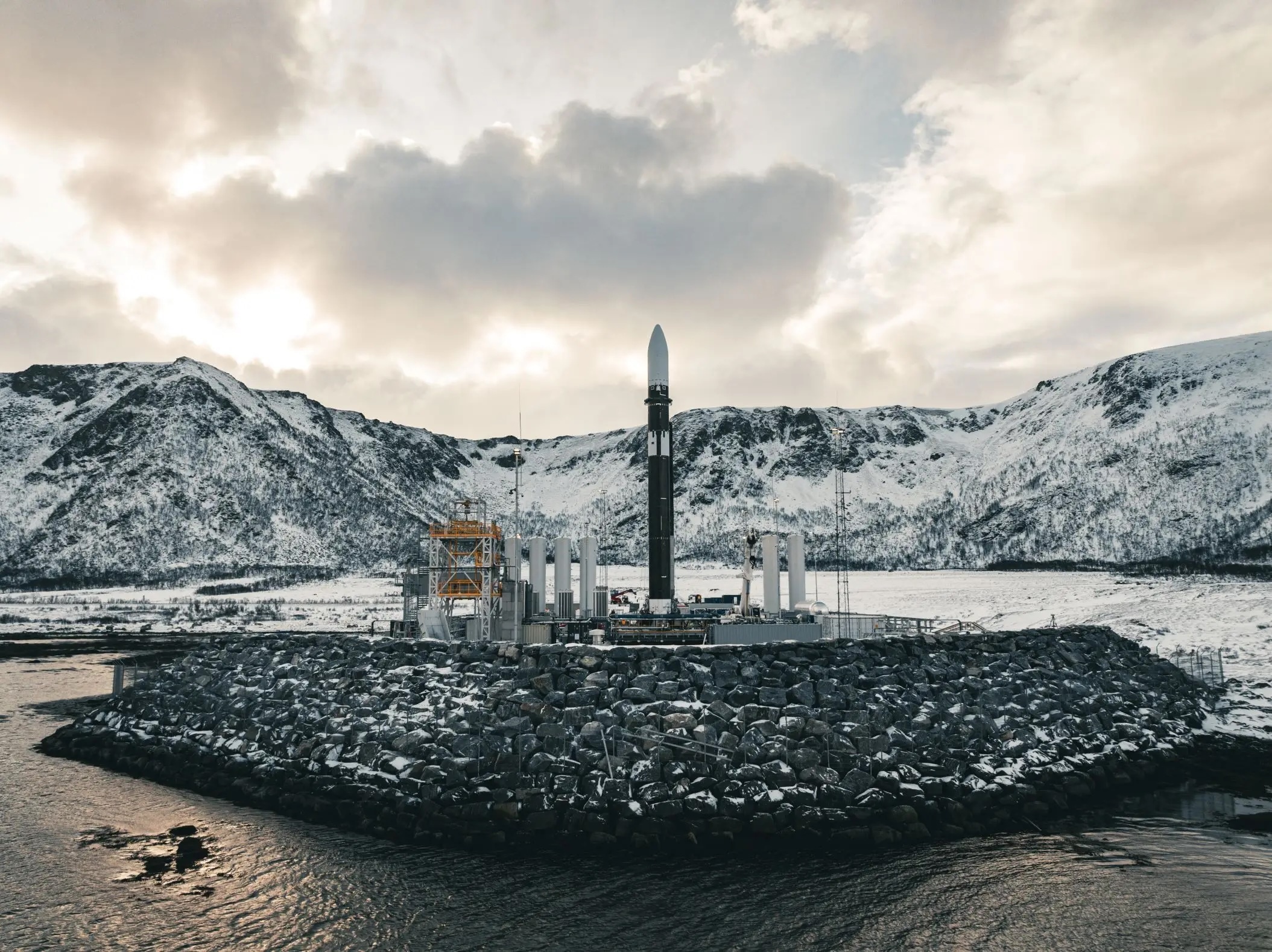
Updated March 25 at 1:20 p.m. EDT with new launch window information shared by Isar Aerospace on Tuesday.
After a scrubbed test flight on Monday, a German spaceflight company has determined its next opportunity to launch the first commercial orbital launch vehicle from mainland Europe.
Munich-based Isar Aerospace postponed the debut launch of its Spectrum rocket, citing unfavorable winds at Norway’s Andøya Spaceport. On Tuesday, Isar said it will now target Thursday at 7:30 a.m. EDT for the highly anticipated test flight, which could pave the way for a more robust European presence in the commercial space industry.
The mission will not have a payload—rather, it will serve as the first integrated test of all rocket systems. And no matter what happens, Isar said it will view the test as a success.
“Rather than relying on years of computer simulations hoping for perfection on the first try, we embrace real-world testing,” said Daniel Metzler, CEO and cofounder of Isar, in a LinkedIn post. “This first flight test is about collecting as much data and experience as possible. Launch. Learn. Repeat.”
Spectrum represents Isar’s bid to capture a slice of the small and medium satellite launch market, which is dominated by SpaceX’s Falcon 9. The reusable model accounted for more than half of all global orbital launch attempts in 2024.
It is also expected to compete with the Ariane family of rockets, upon which the European Space Agency (ESA) has relied for decades. Ariane vehicles are built by a consortium of European companies led by Arianespace and backed primarily by the French government. But they are expensive, nonreusable, and typically launch from the French-run Guiana Space Center in South America.
Standing about 92 feet tall with a diameter of about 6 feet, Spectrum is designed to carry payloads of up to 2,200 pounds to low Earth orbit. The two-stage vehicle burns 40 tons of liquid oxygen and propane across its nine first-stage Aquila engines and single second-stage engine. Unlike Falcon 9, though, the vehicle is not reusable, which is what allowed SpaceX to lower launch costs and take command of the market.
Isar’s goal is to eventually produce up to 40 Spectrum vehicles annually at its facility near Munich. Per Metzler, it builds nearly all components in house and is already producing two more rockets. The company is operating with about $435 million in funding from private investors as well as the NATO Innovation Fund and German government.
The European Space Agency (ESA), notably, has also poured millions into Isar and other commercial launch providers through its Boost! program. On Monday, the space agency opened the European Launcher Challenge, which invites applicants to compete for private launch services contracts. The moves mirror NASA’s embrace of commercial firms to support ISS astronaut crew swaps, science missions, and a number of other functions.
“Whatever the outcome, Isar Aerospace’s upcoming Spectrum launch will be historic: the first commercial orbital launch from mainland Europe,” Josef Aschbacher, director general of ESA, wrote last week on X. “The support and cofunding the European Space Agency has given Isar Aerospace and other launch service provider startups is paying off for increased autonomy in Europe.”
As Metzler wrote on LinkedIn, privately built rockets like Spectrum could help ESA develop its own “competitive, flexible, and independent” space industry.
Philippe Baptiste, France’s minister for higher education and research and a vocal critic of President Donald Trump’s administration, has echoed that sentiment. The newest member of the Ariane family, Ariane 6, debuted about one year after Ariane 5 was retired and completed its first commercial missionearlier this month. Following that flight, Baptiste asserted the need for a European alternative to the U.S. orbital launch industry as President Donald Trump and SpaceX CEO Elon Musk take aim at NASA and its programs, such as the International Space Station (ISS).
“If we want to maintain our independence, ensure our security, and preserve our sovereignty, we must equip ourselves with the means for strategic autonomy, and space is an essential part of this,” Baptiste said.
Following Spectrum’s debut flight, the rocket is expected to launch small satellites on behalf of the German Space Agency at DLR. Isar earlier this month also signed a contract with the Norwegian Space Agency to launch its Arctic Ocean Surveillance satellites from Andøya through 2028.
Quelle: FLYING
----
Update: 29.03.2025
.
Isar Aerospace set for second attempt at first orbital launch from continental Europe
Isar Aerospace, based near Munich, Germany, is scheduled to make the first-ever launch attempt of its Spectrum two-stage rocket no earlier than Saturday, March 29, at 11:30 UTC from the Orbital Launch Pad at the Andøya Space Center in Norway. An earlier attempt on Monday, March 24 was scrubbed due to high winds.
Isar is targeting the beginning of a three-hour window that ends at 14:30 UTC. The Norwegian Civil Aviation Authority granted a Permit for Launch on Friday, March 14, and the launch period began on Thursday, March 20.
The mission, named “Going Full Spectrum,” is the first orbital launch attempt from Norway and continental Europe, excluding the British Isles and Russia. One other orbital attempt was made from Cornwall in England involving Virgin Orbit’s Launcher One. That rocket failed after launch in January 2023, and Virgin Orbit ceased operations afterward.
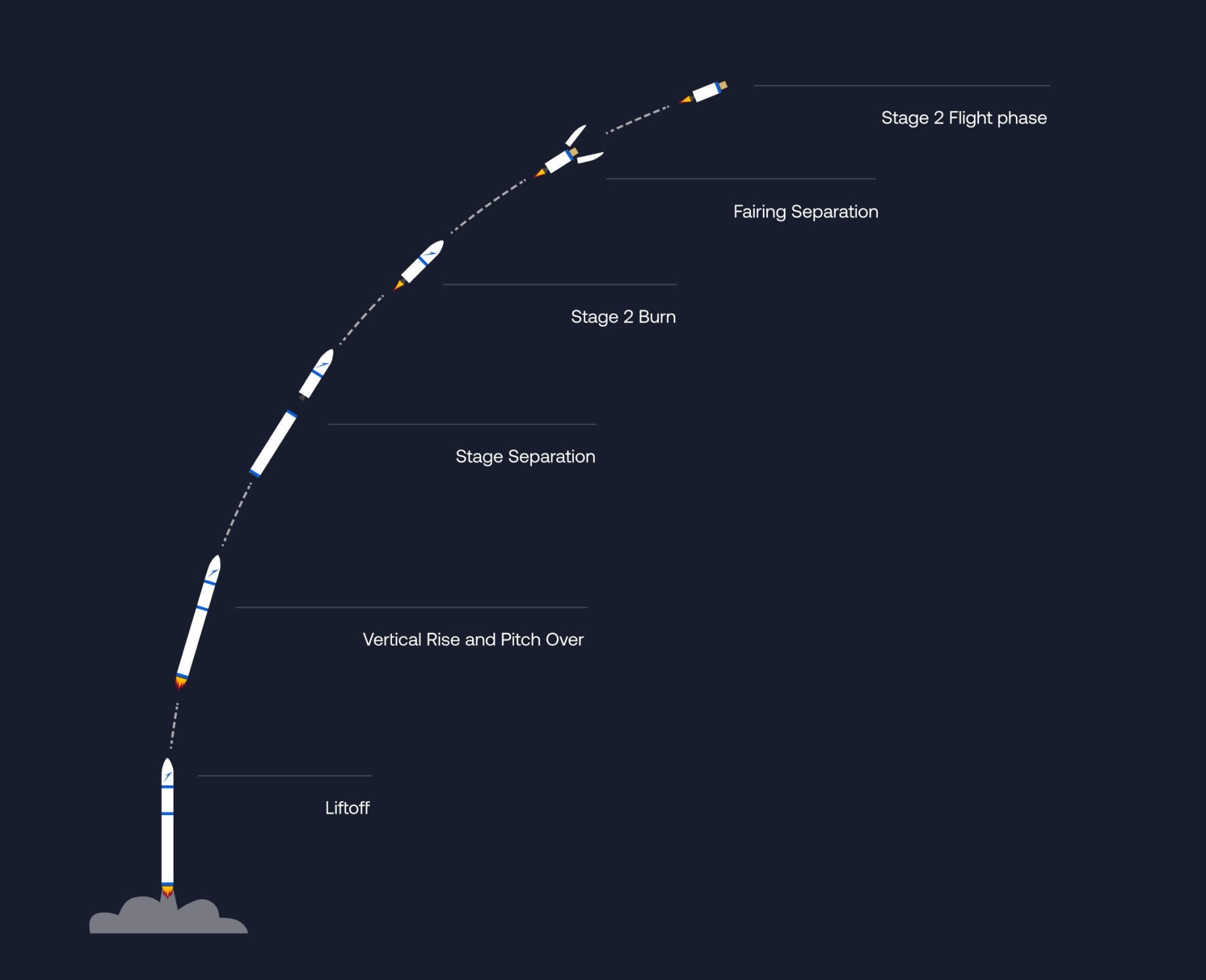
The Spectrum rocket will be flying on a northwest trajectory over the Norwegian Sea, which would take any payload into a retrograde orbit, although no customer payloads are on board this flight. Andøya, at 69 degrees North latitude and above the Arctic Circle, is one of the most northerly rocket launch sites in the world and can support orbital inclinations between 90 and 110.6 degrees. Andøya is planned to support up to 30 orbital launches per year.
Isar Aerospace, founded in 2018, developed Spectrum to serve the small to medium-sized satellite market and is marketing the launcher as a solution for orbiting constellations. The company is also emphasizing its role in helping to maintain Europe’s space sovereignty and resilience through launching from continental European sites like Andøya.
Spectrum, which took six years of development to reach its first flight, is a rocket built largely out of carbon composites while also featuring 3D-printed high performance metal parts for the engines. Isar Aerospace hopes this cutting-edge technology and automation will be used to lower costs while enabling higher launch cadence, though the vehicle is not reusable.
The Spectrum rocket, with both stages and fairing installed, measures 28 m in height and two meters in diameter, and is designed to launch up to 1,000 kg to low-Earth orbit or 700 kg to a Sun-synchronous orbit. This capability puts Spectrum on the higher-end of small satellite launchers, comparable to Firefly Aerospace’s Alpha, while being much larger and more capable than Rocket Lab’s Electron.
Isar Aerospace developed the Spectrum vehicle almost completely in-house with a vertically integrated approach in mind. In a manner similar to SpaceX’s Falcon 9 and Rocket Lab’s Electron, Spectrum uses nine Aquila engines on the first stage and a single Aquila engine with a larger nozzle optimized for vacuum operation on the second stage.
The Aquila engine, developed in-house by Isar Aerospace, uses propane and liquid oxygen as propellants. The propane was selected for offering the highest density-specific impulse of all carbon-based propellants. The company also states that propane is cleaner and more environmentally friendly than other fuel options.
Spectrum’s second stage is designed to support multiple engine restarts in orbit. This capability allows precise orbital targeting, and the company offers dedicated launches for payloads as well as rideshare flights. Spectrum was also designed with non-pyrotechnic devices for stage and fairing separation, which is meant to give payloads a smoother ride to orbit without jolts caused by using pyrotechnics.
The launch will be a test flight and will be the first time all of the vehicle’s integrated systems are tested as a unit. Although some rockets have successfully reached orbit on their first launch, many others have faced issues that caused early termination of flight. Regardless of the result, the company expects to obtain a great deal of valuable in-flight data that will help further iteration of the Spectrum.
The Spectrum rocket has already conducted successful test firings of its first and second stages. The first stage’s firing, involving all nine engines, occurred on Feb. 14. The second stage was test fired in the third quarter of 2024. The nine engines in the first stage together generate 675 kN of thrust.
Isar Aerospace, named after a river that flows through Munich, has received a launch order from the Norwegian Space Agency for its Arctic Ocean Surveillance program. Two satellites are booked for a launch no earlier than 2028. A Japanese startup company, ElevationSpace, has contracted to launch its 200 kg AOBA spacecraft in 2026, and Spectrum also has launch contracts from Airbus and other companies.
Spectrum’s manifest is booked until mid-2027 as per Isar Aerospace chief commercial officer Stella Guillen. The company has also been selected to use a former Diamant launch pad in Kourou, French Guiana, by the French space agency CNES. The Kourou site will allow Spectrum to reach many more orbits than Andøya, including equatorial orbits.
Although Isar Aerospace’s orbital rocket is set to launch first, other European commercial startups are also working on launchers of their own, with spaceports in Scotland and Sweden also scheduled to host orbital launches in the not too distant future. The European commercial launch industry, after struggles and setbacks, is starting to field orbital rockets, with Spectrum likely being the first to fly.
Quelle: NSF
----
Update: 30.03.2025
.
First test flight of Isar Aerospace
Isar Aerospace’s first Spectrum launch fails
Updated 11:30 a.m. Eastern with details from a media briefing.
WASHINGTON — The first launch of Isar Aerospace’ Spectrum rocket failed March 30 when the vehicle lost attitude control seconds after liftoff and plummeted back to Earth, but the company still considered the launch a successful test flight.
The Spectrum rocket lifted off from Andøya Spaceport in northern Norway at 6:30 a.m. Eastern on the first orbital launch attempt by a commercial entity from continental Europe outside Russia. Weather conditions had postponed the launch by more than a week. The company had a launch period of March 20 through March 31 set by a license the company received from Norwegian regulators March 17.
The vehicle soared into clear skies, but appeared to lose attitude control about 25 seconds after liftoff, shortly after the announcer for the company’s launch webcast said the vehicle would make a pitchover maneuver, designed to allow the rocket to gain horizontal speed as well as altitude.
Within five seconds, the vehicle completely pitched over and started descending. While the webcast cut away from the rocket, an explosion could be heard on the broadcast about 10 seconds later. Video from VG, a Norwegian publication, showed the rocket hitting the surface near the pad and exploding.
Company executives said in a call with reporters about four hours after liftoff that the vehicle activated its flight termination system, which shuts off the rocket’s engines, at the T+30 second mark. The vehicle then fell in an “aerodynamic, stable phase” into a planned zone in waters near the pad, said Alexandre Dalloneau, vice president of mission and launch operations.
“The pad looks healthy, which is good,” said Daniel Metzler, chief executive of Isar Aerospace, on the call.
Officials declined to speculate on what caused the vehicle to lose control. “We saw that the vehicle was tumbling, so there was some form of loss of control,” Metzler said. He said it would be at least a few days before the company could review the data to gain insights on the potential cause, part of a “proper investigation” that will include Andøya Spaceport and Norwegian regulators.
Despite failing half a minute after liftoff, Isar Aerospace called the test flight, which it named “Going Full Spectrum,” a success. “It was a success because we met all of the objectives that we had for that flight,” he argued. “We didn’t reach orbit but we learned a ton from it, and it sets us up very well for the second flight that’s ahead of us.”
“With this test, we were able to gather a substantial amount of flight data to apply on our future missions,” said Dalloneau, who previously oversaw Ariane, Soyuz and Vega launches from French Guiana. “Even if I would say the end of the mission was spectacular, I would say — and I insist on that due to my previous experience — it was still a success.”
“We never expected that we would get to orbit” on this test flight, Metzler said on the call. “We set out to gather data primarily, and that is something that we have successfully achieved. We gathered tons of data.”
The second Spectrum rocket is “quite progressed” in production, but he said it was too early to say when the company might be ready for a second launch as it analyzes the data from this flight. “We’ll make the adjustments that are necessary and try to be back with vehicle number two on the pad as early as possible.”
“We’re super happy,” he said of the flight. “It’s a time for people to be proud of, for Europe, frankly, also to be proud of.”
Spectrum is a two-stage launch vehicle designed to place up to 1,000 kilograms into low Earth orbit and 700 kilograms into sun-synchronous orbit. The first stage uses nine of the company’s Aquila engines, powered by liquid oxygen and liquid propane, while the second stage uses a single vacuum-optimized Aquila engine.
Isar Aerospace has raised more than 400 million euros ($430 million) to date, including more than 65 million euros in an extension of an earlier Series C round in June 2024. Company executives noted before the launch that the second and third Spectrum rockets are in production.
Munich-based Isar is one of several European companies developing small launch vehicles, none of which has made it to orbit. Another German company, Rocket Factory Augsburg, was preparing for a first launch of its RFA ONE rocket from SaxaVord Spaceport in the Shetland Islands when the vehicle’s first stage was destroyed in a static-fire test in August 2024.
The failure of the first Spectrum launch comes just after the European Space Agency kicked off a competition to support new European vehicles. ESA issued a call for proposals March 24 for the European Launcher Challenge, seeking proposals from European companies offering launch services or to upgrade launch vehicles. ESA will select a “bouquet” of eligible companies this summer and seek funding from them from ESA’s member states at its ministerial conference in November.
“Success to get off the pad, and lots of data already obtained. I am sure @isaraerospace will learn a lot,” Josef Aschbacher, director general of ESA, posted on social media just after the Spectrum launch failure. “Rocket launch is hard. Never give up, move forward with even more energy !”
Quelle: SN
+++

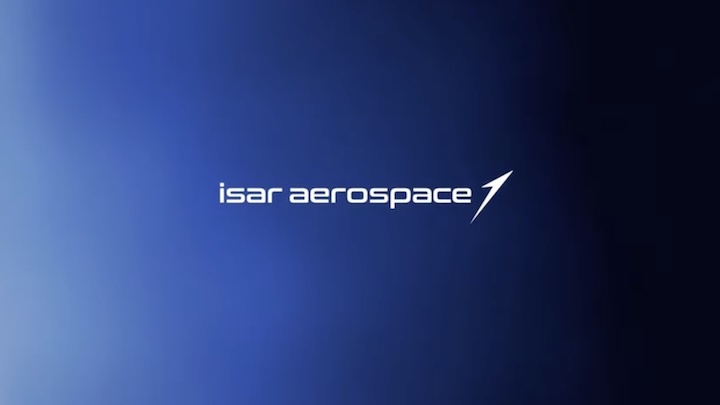
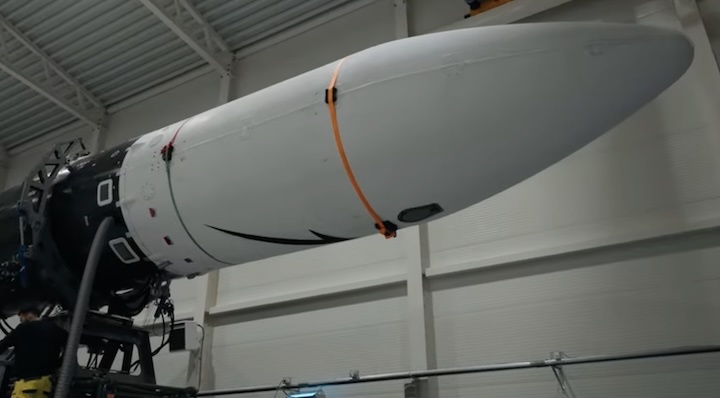
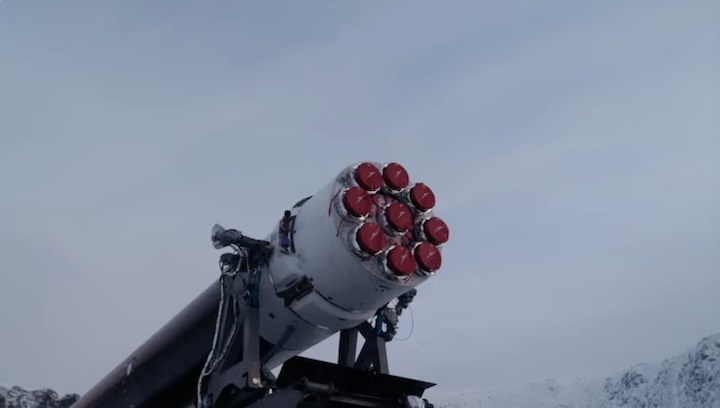
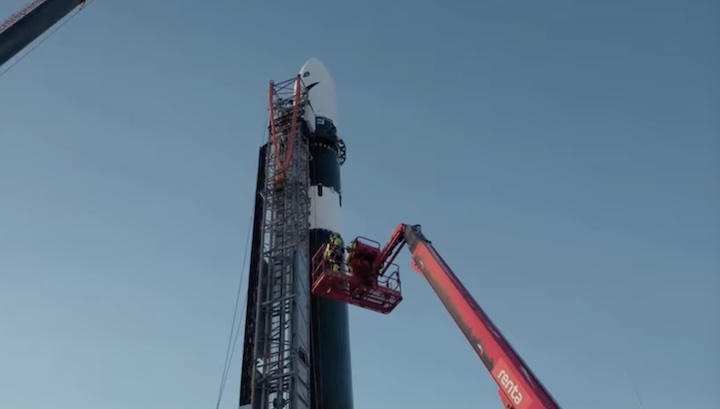
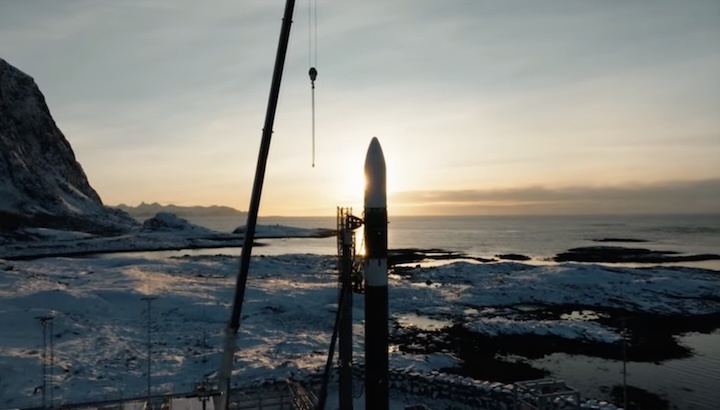

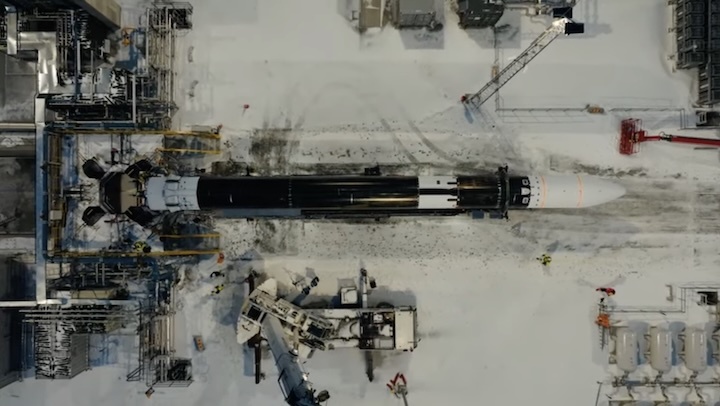
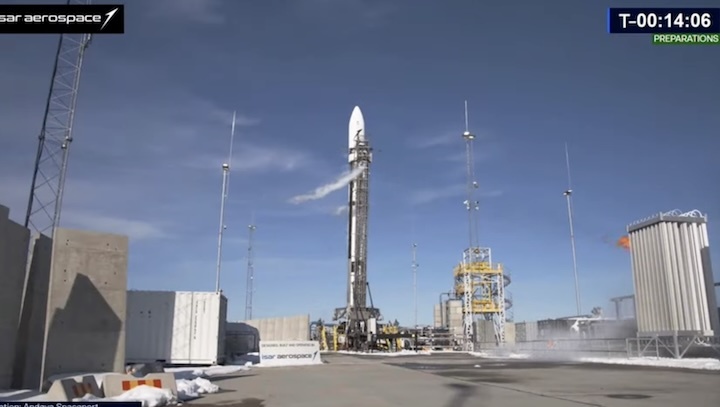
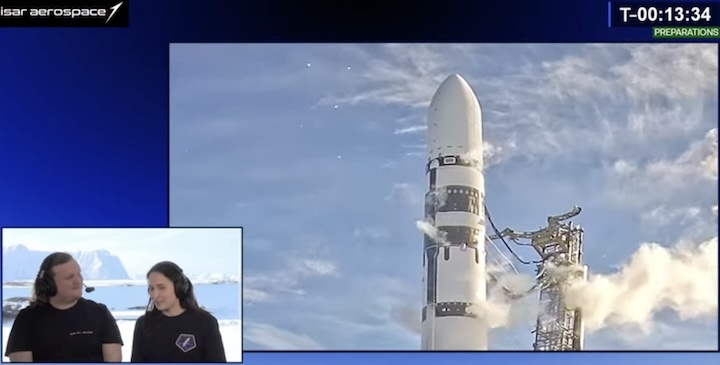
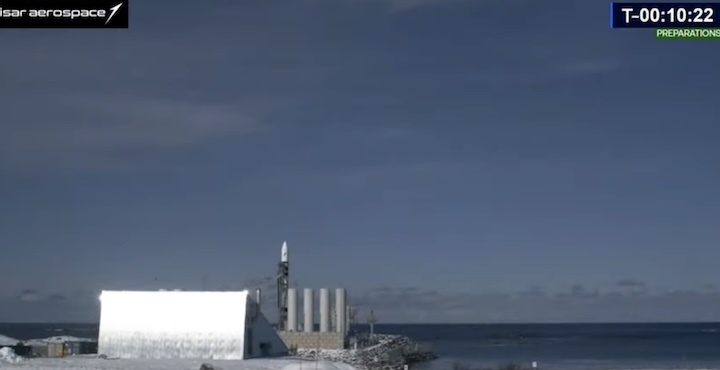
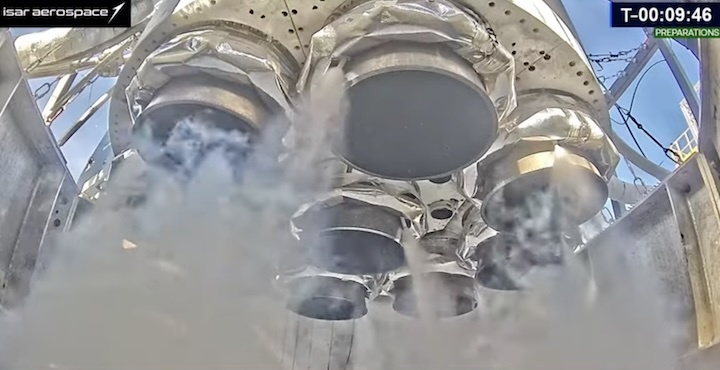
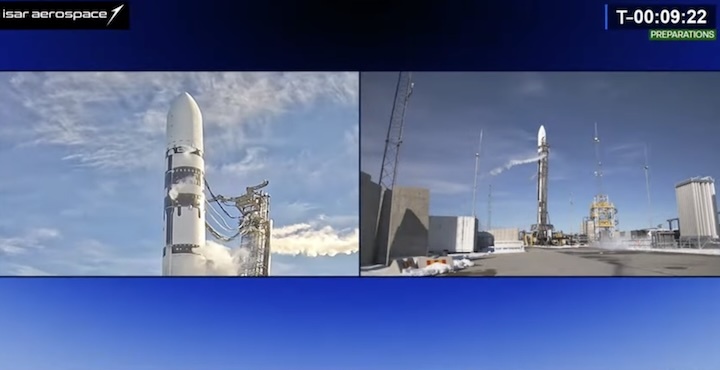
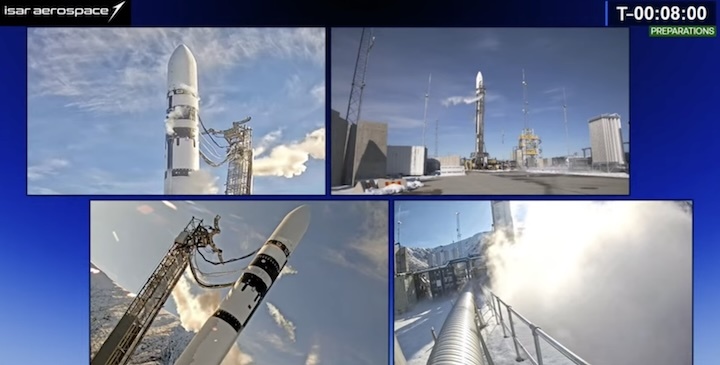
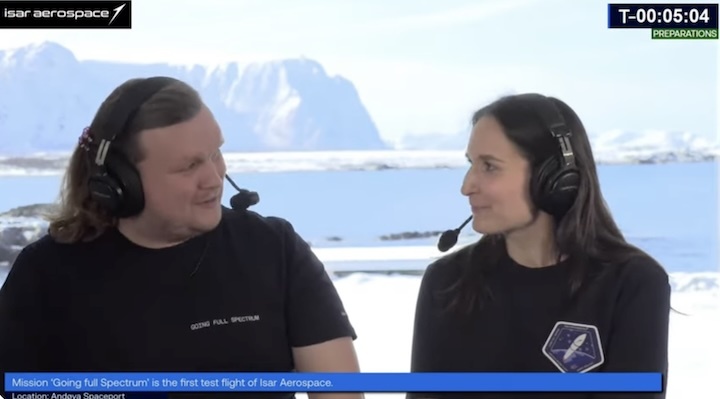
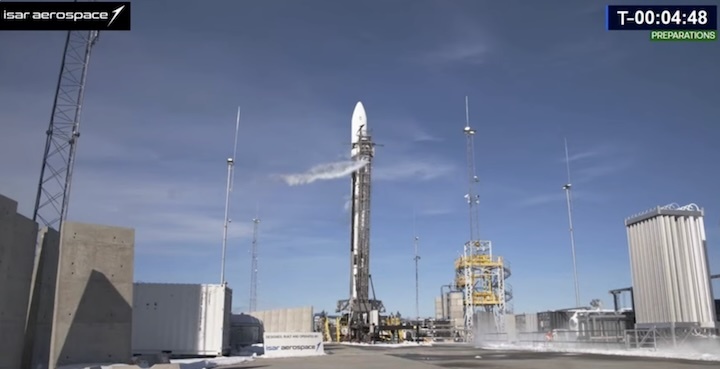
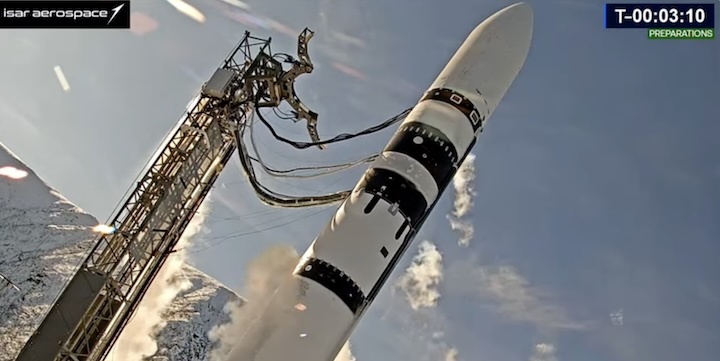

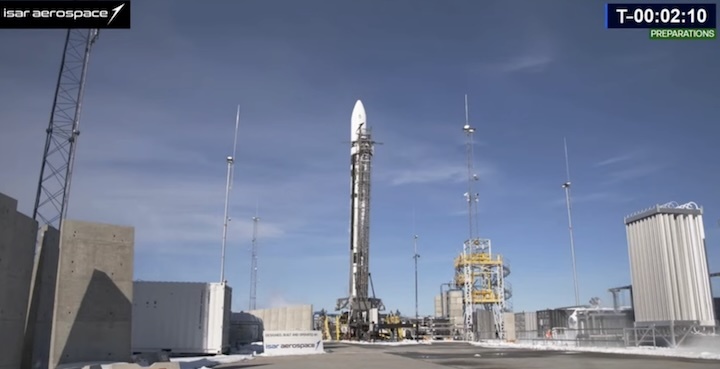
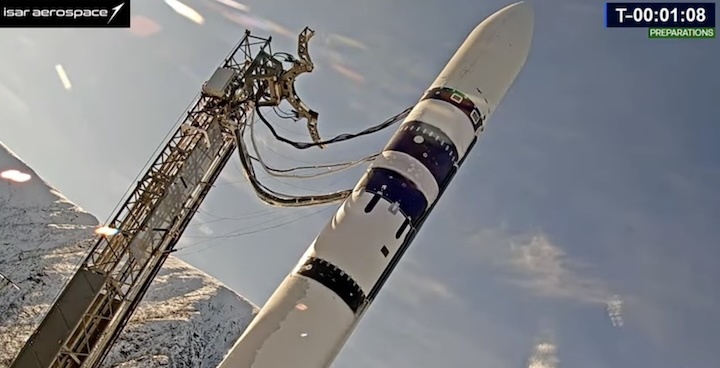
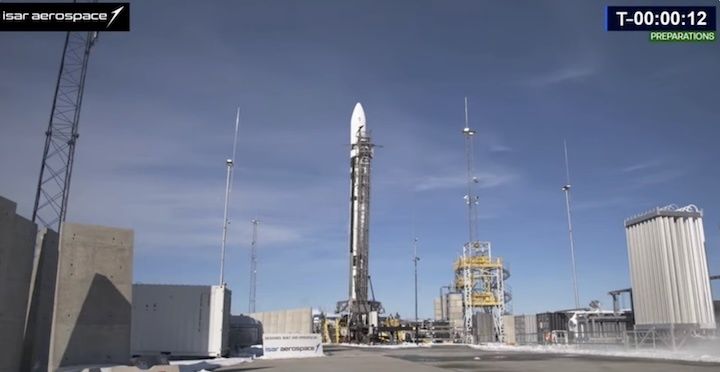
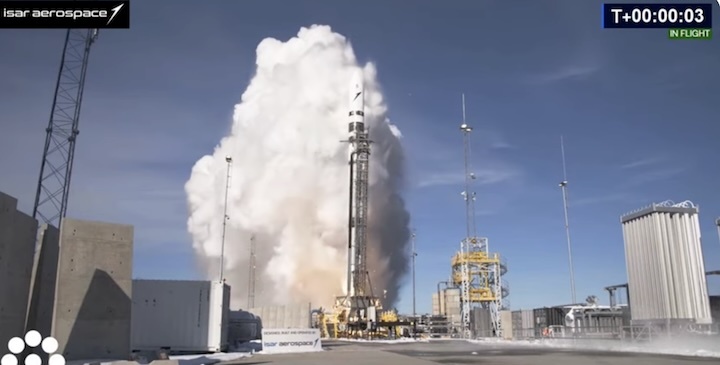

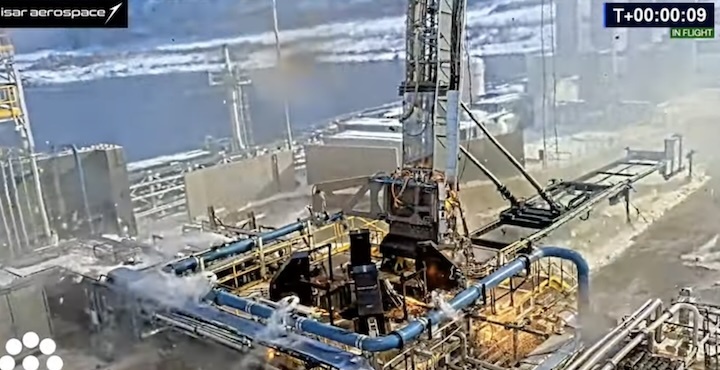
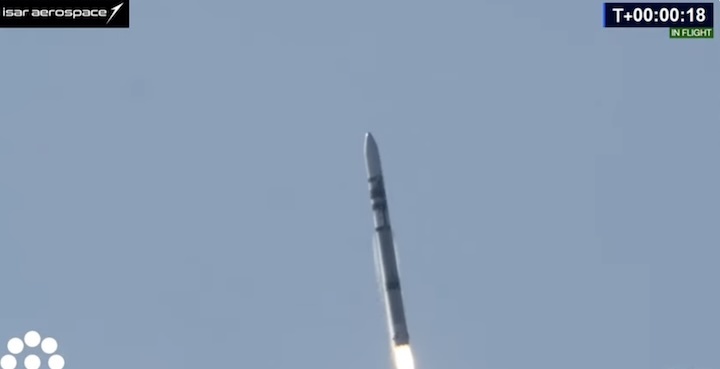
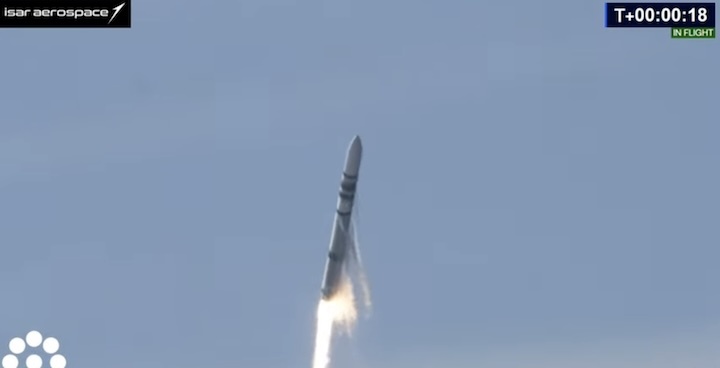
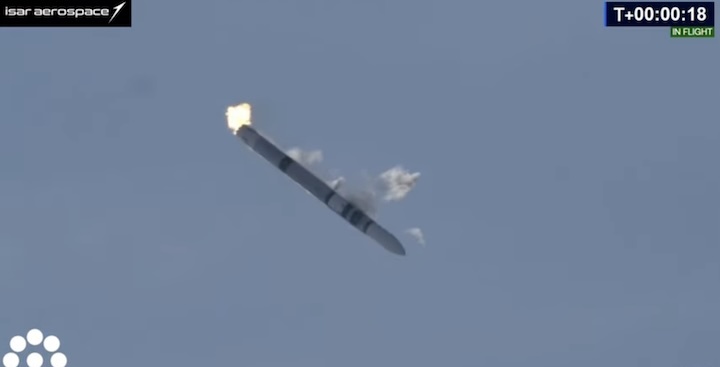

Quelle: isar aerospace
+++
Update: 31.03.2025 12:00 MESZ
.
Warum der Raketenstart trotzdem ein Erfolg ist











Screenshots: Quelle: isar aerospace
-
„Was für ein Erfolg!“, jubelt das bayerische Start-up Isar Aerospace nach dem Start der Trägerrakete „Spectrum“. Beobachter wundern sich: Die Rakete ist doch schon nach 30 Sekunden Flugzeit abgestürzt. Wie kann das erfolgreich sein?
Um 12.30 Uhr MESZ startete „Spectrum“ am Sonntag vom Weltraumbahnhof Andøya in Norwegen. Noch nicht mal eine Minute ist die Rakete geflogen. Für Isar Aerospace ist das aber gar kein Problem.
„Die Startrampe scheint intakt zu sein. Mit diesem Testflug konnten wir wertvolle Daten und Erfahrungen für zukünftige Missionen sammeln“, sagt das Unternehmen. Und genau darum sei es gegangen: Erfahrungen und Daten. Dass die Rakete wahrscheinlich explodieren würde, hatte das Start-up bereits vor ihrem Start angekündigt.
Um 12.30 Uhr MESZ startete „Spectrum“ am Sonntag vom Weltraumbahnhof Andøya in Norwegen.
CEO und Mitgründer Daniel Metzler: „Unser erster Testflug hat alle unsere Erwartungen erfüllt. Wir hatten einen sauberen Start, 30 Sekunden Flugzeit und konnten sogar unser Flugabbruchsystem validieren.“
Der Testflug war auch deshalb so wichtig für Deutschland und Europa, weil langjährige Probleme mit den Ariane-Raketen der ESA dafür sorgen, dass Europa bei der Beförderung von Satelliten ins Weltall bisher noch hinterherhängt.
„Spectrum“ ist als erste Rakete eines kommerziellen Herstellers vom westeuropäischen Festland aus gestartet – auch das ein Erfolg!
„Spectrum 2“ und „Spectrum 3“ sind bereits in der Produktion. Die Nachfolger der Testrakete sollen kleine bis mittelgroße Satelliten ins All befördern. Die Unternehmer bereiten sich auf den nächsten Start vor. Künftig will das Start-up bis zu 40 Träger-Raketen pro Jahr bauen.
Das könnte auch bei der Unabhängigkeit von den USA eine wichtige Rolle spielen. „Starlink hat gezeigt: Wer die Kommunikations- und Datenhoheit hat, hat die Macht“, sagte Metzler dem „Spiegel“.
Quelle: Bild
